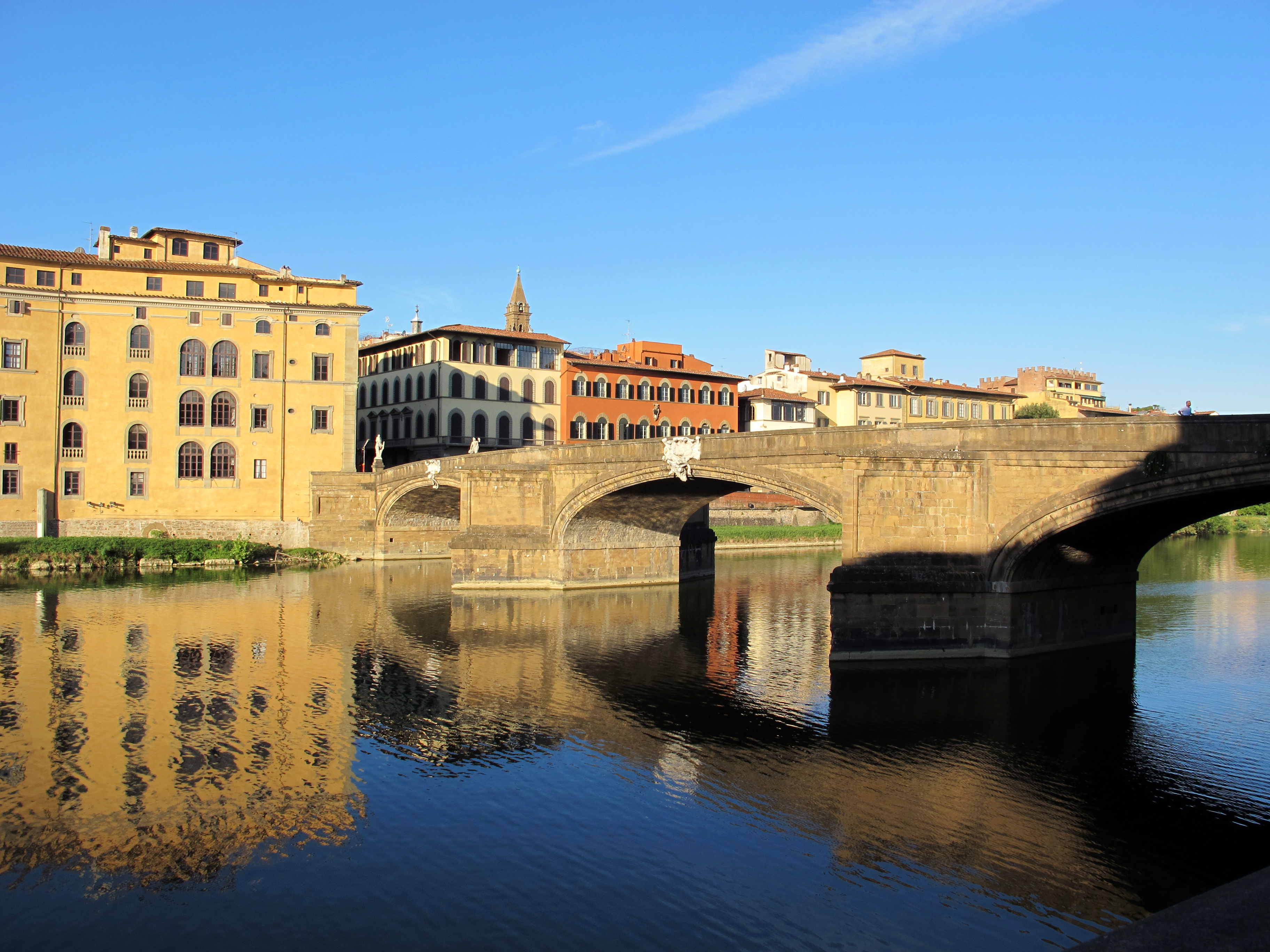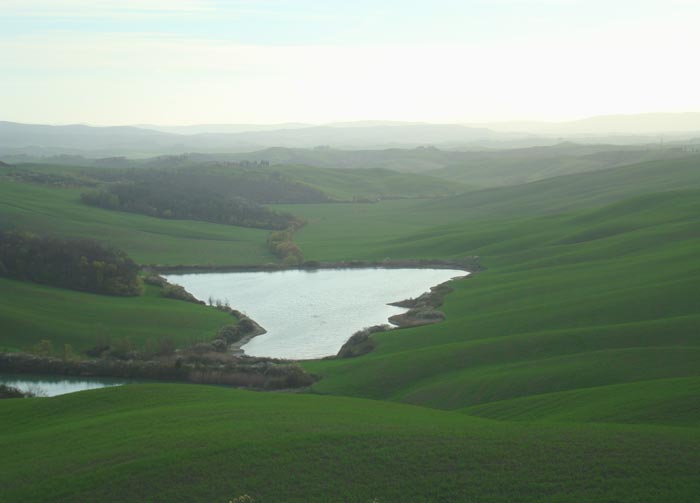| |
|
Bartolomeo Ammannati (18 June 1511 – 13 April 1592) was an Italian architect and sculptor, born at Settignano, near Florence. He studied under Baccio Bandinelli and Jacopo Sansovino (assisting on the design of the Library of St. Mark's, the Biblioteca Marciana, Venice) and closely imitated the style of Michelangelo.[4]
His extensive travels in north and central Italy gave him an unequalled understanding of developments in architecture and sculpture in the era of Mannerism [3].
Bartolomeo Ammannati was more distinguished in architecture than in sculpture. He worked in Rome in collaboration with Vignola and Vasari),[1] including designs for the Villa Giulia, but also for works and at Lucca. He labored during 1558–1570, in the refurbishment and enlargement of Pitti Palace, creating the courtyard consisting of three wings with rusticated facades, and one lower portico leading to the amphitheatre in the Boboli Gardens. His design mirrored the appearance of the main external façade of Pitti. He was also named Consul of Accademia delle Arti del Disegno of Florence, which had been founded by the Duke Cosimo I in 1563.
|

|
Ponte Santa Trinita, Florence[1]
|
In 1569, Ammanati was commissioned to build the Ponte Santa Trinita, a bridge over the Arno River. The three arches are elliptic, and though very light and elegant, has survived, when floods had damaged other Arno bridges at different times.[4] Santa Trinita was destroyed in 1944, during World War II, and rebuilt in 1957.
Ammannati designed what is considered a prototypic mannerist sculptural ensemble in the Fountain of Neptune (Fontana del Nettuno), prominently located in the Piazza della Signoria in the center of Florence.[4] The assignment was originally given to the aged Bartolommeo Bandinelli; however when Bandinelli died, Ammannati's design, bested the submissions of Benvenuto Cellini and Vincenzo Danti, to gain the commission.
|
 |
Bartolomeo Ammannati, Fountain of Neptune, 1559-75, Marble and bronze, Piazza della Signoria, Florence [2]
|
| From 1563 and 1565, Ammannati and his assistants, among them Giambologna, sculpted the block of marble that had been chosen by Bandinelli. He took Grand Duke Cosimo I as model for Neptune's face. The statue was meant to highlight Cosimo's goal of establishing a Florentine Naval force. The ungainly sea god was placed at the corner of the Palazzo Vecchio within sight of Michelangelo's David statue, and the then 87-year-old sculptor is said to have scoffed at Ammannati— saying that he had ruined a beautiful piece of marble— with the ditty: "Ammannati, Ammanato, che bel marmo hai rovinato!"[5] Ammannati continued work on this fountain for a decade, adding around the perimeter a cornucopia of demigod figures: bronze reclining river gods, laughing satyrs and marble sea horses emerging from the water.
In Urbino on 17 April 1550 Ammanati married the poetess Laura Battiferri (1523–89), later the subject of an extraordinary portrait by Agnolo Bronzino. They travelled to Rome to solicit work from the newly elected pope, Julius III. This resulted in a commission for a pair of tombs, for the Pope's uncle, Cardinal Antonio Maria Ciocchi del Monte, and for Fabiano del Monte (finished c. 1553) in San Pietro in Montorio.
When Julius III died in 1555, Ammanati was summoned by Vasari back to Florence to enter the service of Duke Cosimo I de' Medici. He shortly received a major commission for the spectacular Fountain of Juno for the Sala Grande of the Palazzo Vecchio. The fountain was never erected in the hall but was set up out of doors at Pratolino. The six over life-size marble fountain figures are now in the Bargello, Florence.
He died in Florence in 1592.
|
|
|
|
| |
|
Works
Victory (1540), marble, Museo Nazionale del Bargello, Florence.
Leda with the Swan, marble, also in Bargello, Florence.
Venus (1558–59), marble, Prado Museum, Madrid.
Parnassus (1563), marble, Museo Nazionale del Bargello, Florence.
Allegory of Winter (1563–65), stone, Villa Medici, Castello.
Goddess Opi (1572–75), bronze, Palazzo Vecchio, Florence.
|
|
|
|
|
| |
|
|
|
|
|
|
|
|
|
|
|
|
|
|
|
|
Tomba Sannazaro, Apollo (David) dell'Ammannati, Chiesa di Santa Maria del Parto a Mergellin, Napoli
|
|
|
|
|
|
|
|
|
|
|
|
|
|
|
|
|
|
|
|
|
|
|
|
|
|
|
|
|
|
|
|
|
|
|
|
|
|
|
|
|
|
|
|
|
|
|
|
|
|
|
|
|
|
|
|
|
| |
|

[1] Foto di Sailko, licenziato in base ai termini della licenza Creative Commons Attribuzione 3.0 Unported.
[2] Photo by G.Lanting, licensed under the Creative Commons Attribution-Share Alike 4.0 International license.
[3] History of Art:The High Renaissance, Mannerism | Bartolomeo Ammannati
[4] One or more of the preceding sentences incorporates text from a publication now in the public domain: Chisholm, Hugh, ed. (1911). "Ammanati, Bartolomeo". Encyclopædia Britannica. 1 (11th ed.). Cambridge University Press. p. 859.
[5] Isabella de' Medici, by Caroline P. Murphy, page 76. Murphy only mentions the phrase Ammannati Ruinati as Michelangelo's words. It appears the statue received a cool public welcome relative to the David.
|

Fountain of Neptune | Gallery of images
Guida artistica di Firenze | Piazza Signoria: le statue
|
|
|
 

Holiday accomodation in Tuscany | Podere Santa Pia | Artist and writer's residency
|
| |
|
|
|
|
| |
|
|
|
|
 |
Crete Senesi, surroundings of Podere Santa Pia
|
Podere Santa Pia is situated in the unspoiled valley of the Ombrone River, only 21 kilometres from Montalcino. This valley is famous locally as being of great natural beauty and still very undeveloped.
|
This article incorporates material from the Wikipedia article Bartolomeo Ammannati published under the GNU Free Documentation License.
|
|
|




